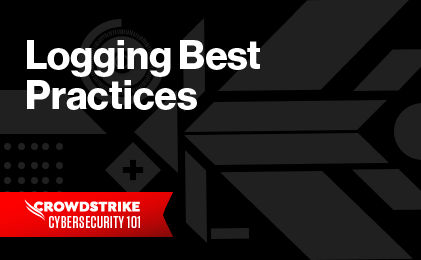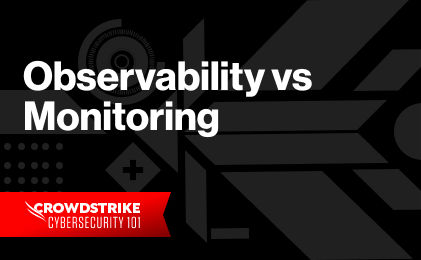Complete Guide to Next-Gen SIEM
Complete Guide to Next-Gen SIEM
Continuous event logging and monitoring are essential components of application health, accessibility, and availability. However, although logging and monitoring differ in function and role, both are necessary to perform application management effectively.
Logging is the process of collecting and accessing logs. Logs are timestamped records of events that occurred within (and are generated by) various parts of an application, including its components and its infrastructure.
Monitoring uses a set of diagnostics tools and techniques to collect and evaluate system metrics. Monitoring focuses on the reliability and performance of each component in the application’s infrastructure.
In this article, we’ll explore logging and monitoring processes, looking at why they’re important for managing applications. We’ll also cover best practices to integrate logging with monitoring to obtain robust visibility and accessibility over an entire application.
What Is Logging?
Logs are a vital source of information in application management. Logs contain historical records of events (including transactions, breaches, and errors) that occurred within an application. These logs are used to gain insights into the application’s performance over time.
By inspecting logs, you can troubleshoot errors, find security loopholes, or trace a potential security breach. Managing logs involves several considerations.
Log Storage
Complex applications usually generate more logs, inflating log sizes, and triggering disk congestion and high storage costs. Determining an effective approach for extended log storage includes setting up retention and archiving policies.
Log Aggregation
Application components generate logs that are saved on their respective hosted servers. For complex applications, this could lead to log files distributed across hundreds of servers. Developers and DevOps engineers need access to the servers hosting these disparate logs in order to trace errors or debug applications. Not only is this type of debugging approach tedious, but the widespread access can potentially increase security risks.
Log aggregation at a centralized location provides easy and reliable access to events generated across the infrastructure without navigating different servers.
Securing Logs
Logs that contain sensitive information (such as passwords or account numbers) need to be properly secured. This may include encrypting or masking sensitive data as well as implementing access control policies to sensitive logs.
Log Enrichment
Log enrichment improves ingested log quality and contextualizes log events by adding missing information or pruning redundant information. This improves the overall readability and reliability of logs as well as helps with correlating events across logs. In all, this aids in identifying relevant trends and root cause issues without evaluating each dataset independently.
What Is Monitoring?
Monitoring is the real-time observation of logs and metrics from a system, typically combined with dashboards, visualizations, and alerts. As engineers keep an eye on the present state of the application, they can identify issues or anomalies. When combined with automated alerts — for example, if a certain metric crosses a critical threshold value — engineers can be notified immediately when an application issue needs remediation.
Various monitoring techniques evaluate different sets of system metrics in order to address broader aspects of your application’s ecosystem.
- Real user monitoring (RUM) uses user information and behavior (within the application) to determine the performance of the end-user experience. For example, a system would monitor how quickly a website page loads when users add products to their shopping carts.
- Synthetic monitoring uses computerized data and scripts to mimic user interactions to test an application’s integrity and performance. For example, it may add or remove products from a shopping cart repeatedly in a short time frame to find potential glitches.
- Network monitoring helps determine low-performing components inside the infrastructure by watching network metrics (such as latency rate, request time, or response time).
- Infrastructure monitoring continuously evaluates the resource utilization of each infrastructure component, assuring the server’s health and uptime.
- Application monitoring continuously evaluates the logs and metrics emitted by an application to ensure the proper functionality of the application.
Integrating Logging and Monitoring
When troubleshooting a failing application, you should leverage both logging and monitoring. Logging provides information about anomalous events, while efficient monitoring provides visibility into the state of your application as those events occur. Effective logging can help you drill down to the root cause of issues, while effective monitoring can ensure you are notified when an issue occurs (or is about to occur).
By adopting the following best practices for integrating logging with monitoring, you can improve your application’s performance and reliability as well as the troubleshooting effectiveness of your engineering team.
- Maintain relevant and consistent data for log files.
- Log and enable monitoring for all relevant and useful event information.
- Append sufficient metadata to each log event to add helpful context to the event flow (for example, timestamps and HTTP response codes) for detailed visibility via monitoring dashboards.
- Templatize the logging format to ensure uniformity across your system.
- Group similar events inside the same log file.
- Use separate log files for different types of events (for example, orders.log
orders.logandcancellations.logcancellations.log). - Apply appropriate retention policies to rotate out or delete old logs. This will enable faster log analysis and reduce log storage costs.
- Enforce efficient threshold criteria for appropriate metrics (such as CPU and RAM utilization).
- Enable alerting mechanisms for critical metrics so that your team can take the necessary action as quickly as possible.
- Maintain meaningful thresholds to avoid generating irrelevant alerts.
- Set up comprehensive monitoring dashboards to analyze critical metrics and application logs.
Discover the world’s leading AI-native platform for next-gen SIEM and log management
Elevate your cybersecurity with the CrowdStrike Falcon® platform, the premier AI-native platform for SIEM and log management. Experience security logging at a petabyte scale, choosing between cloud-native or self-hosted deployment options. Log your data with a powerful, index-free architecture, without bottlenecks, allowing threat hunting with over 1 PB of data ingestion per day. Ensure real-time search capabilities to outpace adversaries, achieving sub-second latency for complex queries. Benefit from 360-degree visibility, consolidating data to break down silos and enabling security, IT, and DevOps teams to hunt threats, monitor performance, and ensure compliance seamlessly across 3 billion events in less than 1 second.







